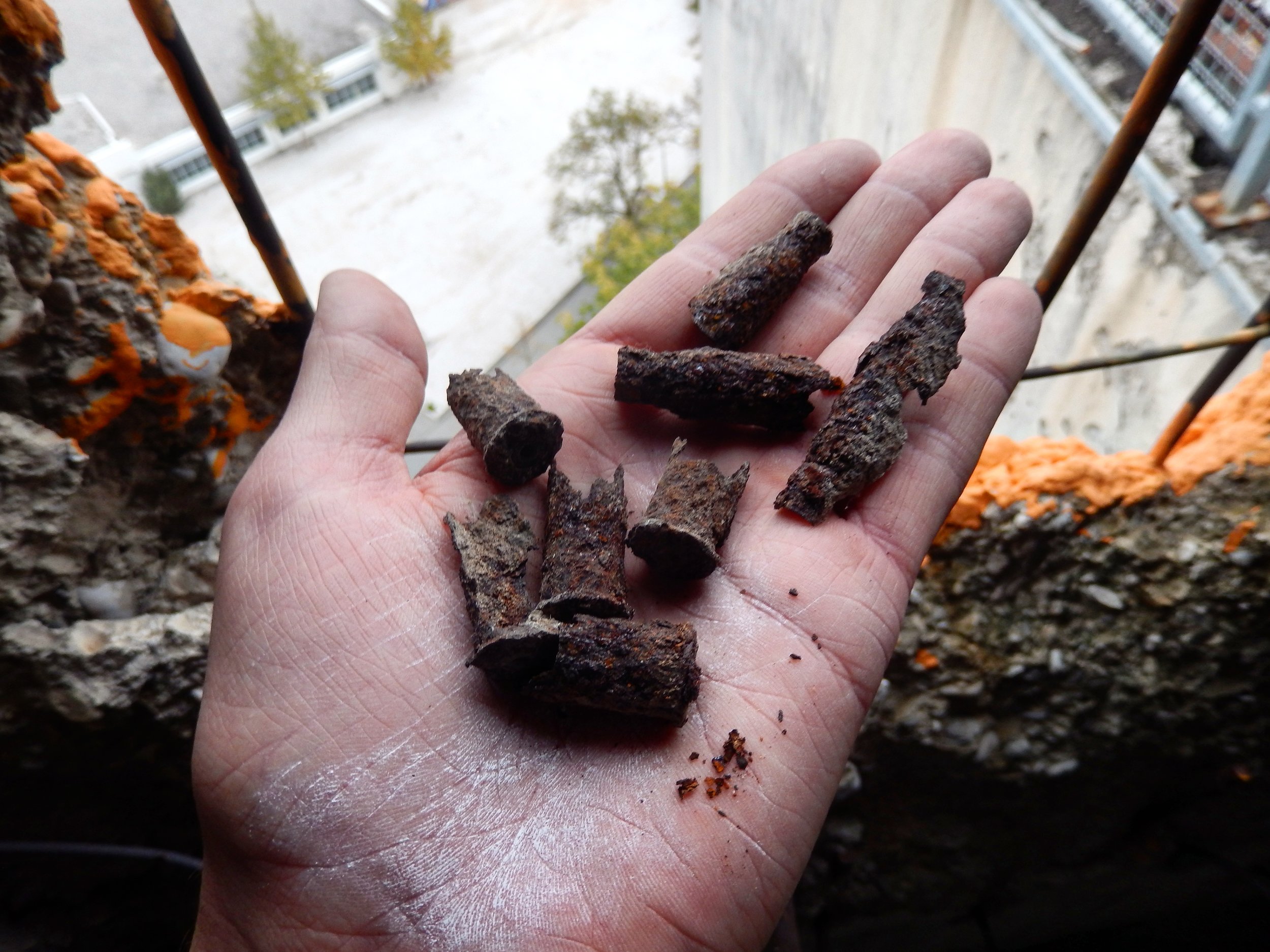The buildings opposite the bus station are full of bullet holes. You can expect to see more of this throughout the city. There was one thing in particular that I wanted to explore and was the reason to come to Mostar; it is not the famous Stari Most bridge but rather the ruins of the Ljubljanska Banka which was used as a sniper tower in the mid 90s.
The city isn't heavily built up and the tower dwarfs the buildings surrounding it. It is a triangular concrete shell peppered with bullet holes. When you approach the building you can see the ground floor has been bricked-up, but to the rear and out of sight it is possible to climb over the wall and in. You must be careful where you enter and your first instinct when landing is to put your hands out to brace but there are hypodermic needles and glass on the floor. As you climb the ten story tower you can see reel-to-reel tape spools and dot-matrix printed documents scattered around; the building is a time capsule. Every level is covered in artwork and graffiti, much being politically based on the war and centred around struggle and loss.
To access the roof you must ascend a rusted steel ladder. There is an electrical service building which is one of the sites where the Croats and Serbs would fire down to the street and surrounding buildings. You can find rifle casings among the dust and rubble. The corroded steel reinforcements in the concrete are exposed and bent back from explosions; smaller holes have been crudely dug just big enough to see through with a rifle.
Before leaving I entered the sublevels which were in total darkness. Bundles of documents floated in plastic sacks in the flooded basement; the water was up to knee level and tinted a copper colour from two decades of stagnation.
Like in Kosovo, I had heard some of what had happened here and the experiences of the people, but standing among what is left behind you begin to realise the reality.
